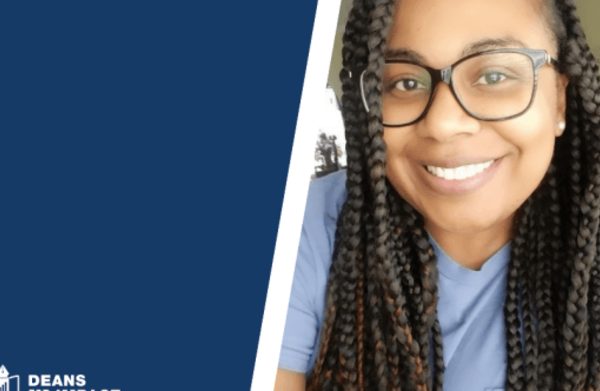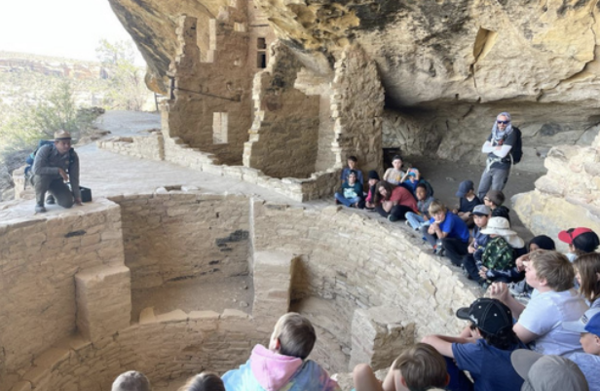Posted on
Building congruence in Louisiana educator preparation
Categories: Cognitive Science, Learning by Scientific Design
What does science tell us is the most effective way for humans to learn?
That’s the question that drove the Louisiana Resource Center for Educators (LRCE) — one of the state’s oldest and largest alternative teacher-certification programs — to join the Learning by Scientific Design (LbSD) Network in 2019. The network is a collaborative of 10 educator-preparation programs working to help future teachers understand that question and its implications for instruction.
“It’s tempting when you first engage with the learning science framework to say, ‘Oh that’s just good teaching, that’s what we do,’” executive director Kyle Finke said. “But it’s worth a pause to really think deeply about how what you’re doing might be different, and the value of everybody approaching what they’re doing in the exact same way.”
In the pause that the LbSD Network provided, the team discovered that they had some work to do to create greater alignment between curriculum, instruction, and coaching. As they began to share the language of learning science, a framework emerged through which to harmonize various aspects of their program.
First, instead of having multiple adjuncts write disparate bits of curriculum, the team centralized writing responsibilities with Adam Gordon, Director of Training and Instruction, which allowed him to standardize and scaffold the presentation of learning science principles within coursework.
“Deans for Impact has transformed how we approach course design. Not only does our coursework focus on teaching learning science principles; we now design our courses with learning science principles in mind so we can prompt our practitioners to effortfully think and ensure learning sticks,” Gordon said.
“We now have a framework for both how to design courses and the content of courses. This has led to greater congruence within the coursework we have, and allows practitioners to connect the dots.”
Second, the team implemented a new model for coaching, in which the course instructor also serves as the coach for teacher-candidates. These faculty received robust training on learning science and a new coaching observation rubric to help them observe and uplift the principles in practice.

“It’s been really exciting to see where our practitioners are landing with their instruction,” said Teryn Bryant, Director of Training and Instruction. “This shift is helping us to improve the congruence of our coaching and our instruction.”
And they’re already seeing results. Teacher-candidates demonstrated 17% higher proficiency in their understanding of cognitive science principles after a year of redesign work.
Helping candidates understand Deepening Meaning and Learning
The LRCE team focused their work around the principle of deepening meaning and learning: the idea that teachers should prompt deep thinking in students in order to help them better remember new information.
“We want students in Louisiana to encode knowledge into their long-term memory and to retrieve that information for years to come. Learning requires students to effortfully think. Promoting effortful thinking is one of the hardest skills for novice teachers to implement in the classroom. Through DFI, we have been able to develop a framework to enable us to emphasize effortful thinking and make a difference in the lives of students,” Gordon said.
When LRCE joined the network, they assessed their teacher-candidates’ understanding of learning science using DFI’s LbSD Assessment. Items on the assessment evaluate whether future teachers understand the principles of learning science and how to apply them in practice. Initially, only about 53% of teacher-candidates correctly identified what it looks like to deepen meaning and learning. After the redesign, 75% of candidates* could correctly identify this principle in practice.
Data also showed that teacher-candidates of different backgrounds made similar gains in their understanding of the principle, indicating that improvements occurred across the board.
Along with the quantitative data that show significant increases in candidates’ understanding, the qualitative data, as shown in their responses to open-ended questions, demonstrate their fluency in using the common language of learning science to justify their instructional decision-making.
For example, on one of the assessment items that measures candidates’ understanding of how to direct students’ attention to meaning, 88% of candidates selected the correct answer after intervention, compared to just 35% before. In addition to this impressive 53% increase, their rationale in open-ended responses reveals a sophisticated understanding of the principle:
“Not only are there more opportunities for practice in [the option I selected], the to-be-remembered information is the bigger focus. This option requires students to think about multiplication problems in multiple ways so they have deeper processing than simply recall.”
On another assessment item that measured candidates’ ability to understand how to use examples and non-examples, 74% of candidates could identify a teacher doing this successfully, compared to just 39% before. Responses prior to the program redesign betray deficit thinking about students:
“My students are more visual and would comprehend and enjoy puzzles rather than written instructions as most of our students’ reading level isn’t where it should be before they get into middle school or high school.”
But after the redesign, candidates demonstrated high expectations for their students:
“The rigor of the learning activity is much, much higher in [the option I selected] and puts the cognitive effort on the student to process and analyze.”
This is one way in which candidates began to more deeply understand how learning science is intertwined with improved outcomes for all children. After redesign, approximately two-thirds of candidates could identify how a teacher might deny students access to a rigorous and affirming learning environment in her classroom.
Finke explained, “We often see a link between how a candidate is utilizing some of these fundamental skills of learning science and high expectations for their student population — asking ‘How do we approach, with very little bias, how we deliver instruction to a wide variety of students in our classroom?’”

Building a statewide movement around learning science
As the team celebrates their early wins, they’re continuing to iterate and improve upon their approach. Ultimately, they hope to create a systemic change within Louisiana’s schools by better equipping novice teachers with a research-based understanding of learning.
“One of the reasons why learning science is so important is that it authenticates our profession as a whole,” Bryant explained. “In education, we’re always trying to fight to show why our work is important. In a state such as Louisiana, where we have struggled being 50 out of 50, and struggled to figure out what to do to figure out how to elevate our education system, I think that we’re on a really good pathway with this.”
As they’ve created greater coherence within the program using the learning science framework, teacher-candidates have benefited. “Teachers coming through the program definitely feel a higher level of coherence now. Things make a lot more sense at every point along the arc of their training and development when we’re able to center on a common understanding of what it looks like to deliver high-quality teacher instruction,” Finke explained.

They hope to extend that common understanding into every school in Louisiana. The team collaborates with master teachers working in the state to provide coaching to their teacher-candidates, and they see this professional development as another avenue to broaden the conversation within education about learning science.
“We’ve been able to provide professional development and training to some of the best teachers in the state on what this is,” Bryant said. “We’re training over 200 teachers a year on learning science in Louisiana. We’re hoping this can help change the landscape of how we’re teaching teachers to teach kids to think.”
*These data are from teacher-candidates who participated in all of LRCE’s redesigned coursework.
Related Stories:

Blog
Q&A with Dr. Natalie Bolton: How UMSL is aligning around learning science
For the last two years, faculty and staff at the University of Missouri—St. Louis have redesigned...
October 19, 2021

Blog
Working with different tools: How learning science helped Acqualyn Polk to rethink her ELA instruction
On a bright winter day in a classroom 30 miles north of the Louisiana coast, a class of...
April 20, 2021

Blog
‘Shifting the lift:’ how one district is using cognitive science to transform teaching and learning
We worked with Delta County School District to apply learning science to teaching practice.
September 27, 2023



